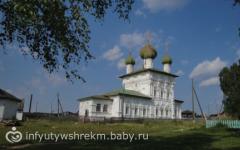MB preschool №9
Abstract of directly organized educational activities with children of the middle group
Subject: "Count to 5"
Prepared by:
Teacher Kazakova Daria Vitalievna
Novokuznetsk, 2016
Abstract of the lesson on FEMP in the middle group.
Goals: develop children's knowledge about geometric shapes, consolidate knowledge in counting up to 5.
Tasks:
Strengthen the ability to compare numbers and numbers(quantity) ;
work outcount within 5 ;
To form the ability to find known geometric shapes;
Develop memory, thinking, speech;
Cultivate activity, independence.
Develop logical thinking.
Equipment:
1. Handout: geometric shapes, counting sticks.
2. Visual material: geometric shapes, pictures depicting numbers from 1 to 5, pictures depicting geometric shapes, a doll.
Lesson progress
Educator:
There are five children in the palm,
Five merry rascals.
All in a row they grab
They only rest at night.
What are their names, guess
Count the kids.
Fingers are easy to recognize -
There are exactly five of them on the hand.
Educator: Guys, today we will consolidate our knowledge in counting up to 5. And we will repeat with you the name of geometric shapes.
2. The main part.
Teacher: Look at the blackboard. (Pictures depicting numbers from 1 to 5)
(Children count aloud together with the teacher. Repeat 3 times)
Oh, hush, it seems that someone has come to us. (I take out a toy: a doll)
Educator: Dasha doll came to visit us, let's say hello to her. Dasha told me that today, on her way to school, she mixed up the numbers and now she cannot put them in order. Let's help her?
(I choose a wishing child who puts the numbers in order on the board)
Educator: Well done Dima, he helped Dasha, but that's not all. Today Dasha will attend our lesson and see which of the guys is the most diligent and smart.
Teacher: Let's have a rest.
Fizkultminutka;
There are five girlfriends in the swamp.
five green frogs
Washed early in the morning.
Towels were rubbed.
They stamped their feet.
Hands clapped.
Right, left leaning
And they returned back.
Here is the secret of health.
Physical education friends!
Educator: we rested a little, and now take the geometric shapes and count how many of them you have on your table.
Children count shapes. (children's answers)
Educator: correctly, there are only 5 of them. And what figures are present in our lesson? (children's answers)
Educator: now guys, the task is more difficult. I will give you counting sticks, and you will try to make geometric shapes from them that I gave you. But Dasha gives you a hint that not all the figures you can make from sticks.
(Children make geometric figures from counting sticks, the teacher corrects mistakes, helps each child in doing the work).
Educator: what a great fellow you are, different geometric shapes turned out, but some figure is missing and it didn’t work out with the help of counting sticks, what do you think? (children's answers)
Educator: that’s right, we didn’t get two figures - this is a circle and an oval. After all, it is impossible to build these figures from counting sticks.
(I show a picture depicting 5 geometric shapes).
Educator: guys, let's repeat the name of the shapes with you: square, circle, triangle, rectangle, oval. (I repeat with the children).
Educator: Dasha really liked how you all answered today, you are such smart and talented kids! She will not leave now, but will remain with you in the group and each of you will be able to play with her.
Educator: guys, let's remember what we did today in class? (Answers of children).
Educator: You were all great today, the lesson is over.
Literature:
1. Pomoraeva, Pozina: Classes on the formation of elementary mathematical representations in the middle group of kindergarten
2. Matlina L.S. Classes in mathematics in kindergarten: (Formation of elementary mathematical representations among preschoolers). garden. 2nd ed., add.-M.: Education, 1985.-223s.
Target:Train in ordinal counting up to 5. Be able to distinguish and name geometric shapes.
Integration educational areas: "Knowledge" (FEMP,) "Artistic creativity" (Drawing), "Music", " Physical Culture”, “Communication”, “Socialization”.
Equipment and materials: Soft toy (any), 5 pieces of furniture (any), cards with the image of five stools with animals sitting on them, a wonderful bag with geometric shapes, a tambourine (or music, 5 hoops, cards with quantitative berries (or numbers), an envelope with paper geometric shapes (circle, triangle, square, rectangle, oval), magnetic board, ½ album sheet, paints, brushes, cups of water for each child.
Lesson progress :
1. The Tiger Cub (any soft toy) comes with a box of furniture. Greeting speech. He needs help counting. The teacher puts 5 pieces of furniture and asks questions:
Sofa, what is our bill? First.
Big, which chair is worth it? Second.
How much is a chair worth? Third.
And a small chair, how much does it cost? Fourth.
Table, what's the value? Fifth.
Children repeat the ordinal count in chorus and individually: first, second, third, fourth, fifth.
Educator: - Well done guys, they answered the questions correctly, coped with the task. The tiger cub thanks you for your help.
2 . Educator: Guys, you have cards on the table, please look.
Count how many stools are drawn? - 5.
And who sits on these stools? - animals.
Almir, look who is sitting on the first stool?
Misha, who is sitting on the fourth stool?
Alexia, who is sitting on the third stool?
Artem, who is sitting on the second stool?
Vika, who is sitting on the fifth stool?
Educator: The tiger cub says thank you, they recognized all my friends.
3 . Educator: The tiger cub also brought a wonderful bag for you, there are geometric shapes there, only he doesn’t know what they are called. Now guys, we're going to play a little.
The game "Wonderful bag".
The bag contains different geometric shapes. Children take turns putting their hand into the bag, identify the figure by touch, name it and take it out. The rest of the children check if the figure is named correctly.
Educator: - Well done guys and with geometric figures helped the tiger cub figure it out, now he will know how they are called correctly.
4. Physical minutes.
Children perform jumps to the sound of a tambourine and count how many times they jumped (up to 5 jumps). The game is repeated 3-4 times.
5. Playing with numbers.
In the hands of children there are cards with quantitative berries, there are 5 hoops on the floor, in the hoops there are cards with numbers. To the sound of a tambourine or to music, children run, jump, and after a signal (tambourine, music) they must stand in hoops with the corresponding number. Children close their eyes, the teacher changes the numbers in places in the hoops. The game is repeated 3 times.
6 . Educator: The Tiger cub in the box still has a surprise for you - Envelope with riddles(about geometric shapes). After each riddle is solved, the teacher takes out a figure and hangs it on the board. Listen to the first riddle:
I have no corners
And I look like a saucer
On a plate and on a lid
On the ring, on the wheel
Who am I, friends? Circle
look at the figure
And in the album draw
Three corners, three sides
Connect to each other
It turned out not a square
And beautiful... Triangle
I am a figure - no matter where
Always very smooth
All angles in me are equal
And four sides.
Cube is my favorite brother
Because I... Square
Four corners, like a square I have.
But I don’t dare to call myself a square,
And yet, it looks like a square, by the way,
Two long sides and two shorter . Rectangle
He looks like an egg, or like your face
Here is a circle
Very strange appearance
The circle became flattened
It suddenly happened... Oval
Educator: Well done guys, they solved all the riddles!
7. Artistic creativity.
Educator: Guys, now we will draw with you. Let's color the geometric shapes. First, draw the outline of the figure and then color it.
The circle is green. The triangle is blue. The square is red.
Educator: And what beautiful and neat geometric shapes did you get? Children respond in chorus and individually.
8. The result of the lesson:
Did you like the lesson, and what did you like the most?
All the guys are great! They did a good job. And Tiger Cub also helped. The tiger cub is very grateful to you and very glad that he now knows how to count up to 5, knows the names of geometric shapes.
Occupation count within five
Integration of educational areas: « Speech development» « cognitive development» «Socio-communicative», «Health».
Target A: The development of children's interests curiosity cognitive activity.
Tasks:
educational: to form knowledge about numbers from 1 to 5; knowledge of geometric shapes (circle, square, triangle, rectangle, polygon); ability to navigate on a sheet of paper; develop constructive skills (collect puzzles with cartoon characters).
Educational : develop children's interests, logical thinking, curiosity.
Educational : development of communication and interaction of the child with adults and peers.
Preliminary work:
Reading and discussion with children of the fairy tale "Doctor Aibolit"
Methodical methods:
Game situation, problem statement, conversation-dialogue, speech games, outdoor game "We will buy with my grandmother", constructive activity, experiment with water in a jar, analysis, displaying pictures for tasks using ICT, summing up.
Secret experiment with water. In order for colored water to appear in a jar after clear water, you need to apply thick gouache on the lid of the jar. After you shake or shake the closed jar, colored water will appear in it.
Demo material:
A chest, five keys, a small glass jar with clear water, blue fabric stretched over a hoop (lake), five fish with numbers from 1 to 5, telephone.
Handout:
A set of geometric shapes (circle, square, triangle, rectangle, hexagon), puzzles with cartoon characters.
Vocabulary work:Africa, plastic.
Introductory part.
OOD progress:
Children enter the hall and stand in a semicircle facing the guests.
Educator. Guys, look today we have a lot of guests. Tell me, do you like when guests come to you?
Children. Yes.
Educator. Let's say hello to our guests.
Children. Hello.
caregiver . But that's not all, we received a letter from Dr. Aibolit from a familiar fairy tale.
Let me read the letter to you: “Guys, help me, please, they called me from Africa and asked me to come urgently. In Africa, all the animals got sick. I took magic water and already, it was about to go, but the evil pirates took away my magic water! They locked it in a chest and threw the key into a deep lake.
Educator. How can we help? What do we have to do?
LETTER CONTINUED: You have five tasks to complete. For each correctly completed task, you will receive a key from the fish. If you collect five keys, you will be able to open the chest with magical water. I would have gone with you myself, but other sick animals are waiting for me.
Main part.
Educator. Can we help you guys?
Children. Yes
caregiver . Gotta get on the road. But first we will check if you can help Aibolit. I suggest you play a game called "Parts of the Day". I will read the sentence, and you try to finish it.
Game "Parts of the day"("Finish the sentence")
- We sleep at night, and do exercises ... (in the morning)
- We have breakfast in the morning, and lunch ... (in the afternoon)
- We have lunch during the day, and we have dinner ... (in the evening)
- We have dinner in the evening, and sleep ... (at night)
- How many parts in a day?
Children. (4).
Educator. Name them.
Children. (morning afternoon Evening Night).
caregiver . Tell me, when does our journey begin, at what time of the day? Children. (In the morning.)
caregiver . What time of year is it now?
Children. (WINTER)
caregiver . Name the winter months
Children. (December, January and February - don't forget them).
caregiver . Well done! Dr. Aibolit also sent you assignments and wants to check the children? I will ask you questions and you will answer it.
The game "What time of year?"
- At what time of the year does everyone swim and sunbathe? (Summer).
What time of year do birds fly south? (Autumn).
What time of year do snowdrops bloom? (Spring).
What time of year do they play snowballs? (in winter)
What time of year does snow melt? (Spring)
What time of year do leaves fall from trees? (in autumn)
- At what time of the year do thawed patches appear? (Spring)
Well done! I think that you can manage and get all the keys ..
Educator. Then we go to the lake. We go along the path. Look at the fish swimming in the lake. To find out which task is the first, and which is the second, etc., we need to arrange the fish in order. (Each child lays out fish with numbers from 1 to 5 in a hoop). Find a fish with the number 1. Now you will sit on the chairs and we will see what task this fish has prepared for us.
- Well done! Here is the first fish and task 1.
1 TASK - The game "Say in one word" (generalization) with the ball.
- Apple, pear, plum, lemon - ... (fruit).
- Bed, bedside table, chair, wardrobe - ... (furniture).
- Dog, cat, cow, goat - ... (pets).
- Dad, mom, grandmother, grandfather - ... (relatives - family).
- Cube, doll, car, ball - ... (toys).
- Slippers, sandals, boots, sneakers - ... (shoes).
- Bee, dragonfly, fly, beetle - ... (insects).
- Airplane, helicopter, rocket - ... (air transport).
Educator. Well done! Here is the key from the fish for the correct answers. Find the fish with the number 2. Well done.
Task 2.
Children sit in a semicircle near the projector.
TASK 2 - The game "We describe the animal."
Educator. If you guess the animal, it will appear on the screen.
This animal has a gray coat in summer and white in winter. He runs fast. He is afraid of everyone in the forest, hiding under a bush (hare).
- He's small and prickly. Sleeps in winter. In summer it catches beetles and worms (hedgehog).
- He's big, shaggy, clumsy. In winter, he sleeps in a den. In summer, he walks through the forest and looks for honey and raspberries (bear).
- She's red-haired and sly. She has a fluffy tail. Lives in a hole. Catches mice and hares (fox).
- He is gray and scary, angry and hungry. Catches hares and calves. Lives in a lair (wolf).
She is small, fast, red-haired. Jumps through the trees, lives in a hollow. Gnawing cones and nuts (squirrels).
Educator. Guys, what are the names of these animals? That's right, wild animals. For the correct answers, the fish gives us a second key. Where is the third fish? (Children find a fish with the number 3).
Task 3. She invites us to play a game
The game "What are the objects made of?"
- Rubber ball - ... rubber.
- Plastic ball - ... plastic.
- A glass of glass - ... glass.
- Matryoshka made of wood - ... wooden.
- Rubber duck - ... rubber.
- Fur toy - ... fur.
- Paper craft - ... paper.
- Iron nail - ... iron.
Educator. Well done! From the fish we get another key. Next task 4. (Sit down at the tables).
4 TASK - The game "What is where?"
This is a memory task. Children are encouraged to carefully observe and memorize where the geometric shapes are located. Then place geometric shapes on the landscape sheet.
Educator.
In the middle is a circle.
In the upper right corner is a square.
In the lower left corner is a hexagon.
In the lower right corner is a triangle.
In the upper left corner is a rectangle.
Educator. Fine. Did you do everything right? The fish gives us the fourth key. And let's see the last one. There is only one fish left. What number? That's right, 5.
5 TASK - Assemble familiar cartoon characters with puzzles.
Children collect puzzles and name the cartoon. (music)
Final part.
Educator. Well done! Rybka gives us another key. So, how many keys do we have? (Five). It's time to call Dr. Aibolit.
They call the doctor.
We have 5 keys. Now we have to pick up the key to the casket, open it and get magical water?
Children with a teacher select the key. Open and get magic water. (She is transparent).
Educator. In my opinion, this is ordinary water, but what do you think children?
Teacher: No, no! See. (The teacher covers the jar with a cloth, chatting, it turns out colored water.) Real magic water! Thanks for the help! Rather, let's send magic water to Africa to treat animals. And Dr. Aibolit sent us a surprise in a chest so that we would not get sick. Goodbye.
The teacher and children find vitamins in the casket
Natalya Melkova
I present to your attention the options for didactic games aimed at the formation of mathematical representations, learning to count up to 5 and getting to know numbers, using sensory elements for the development of fine motor skills (clothespins, Velcro parts, magnets, handmade puzzles.
The proposed game options are intended for children 3-5 years old.
Target:
1. Acquaintance of children with numbers from 1 to 5, fixing the numbers and the number series within 5.
2. Fixing the reverse and ordinal counting, correlation of number and quantity.
3. The development of attention, memory, visual-figurative and logical thinking, the ability to analyze, compare, classify through teaching counting operations and didactic games. Correction and development of long-term memory.
4. Formation in children of sensory abilities, tactile sensations.
5. Development of ideas about the color, shape, size and properties of objects through vivid visual images and gaming activities.
Material:
All game options are inextricably linked with fine motor skills, finger dexterity and hand-eye coordination. All game elements are made of felt of different hardness and other materials, thanks to which the sensory experience of children is enriched. Two types of clothespins are used as additional sensory elements: wooden - 4cm and plastic - 6cm, neodymium magnets, Velcro. As a basis for Velcro (for strong, tenacious fastening), I used Velcro fabric (cans and belly of a chicken).
GAME OPTIONS:
#1. PUZZLE "LADYBUGS".
Puzzles are a great educational toy. They perfectly influence the development of logical and spatial thinking, attention, memory. Folding the picture, the child develops fine motor skills of the hands and begins to better coordinate their movements. By developing these skills, the child will be able to easily master writing and speech in the future.
Let's count the dots on the back of the ladybugs and connect them to the desired number.














#2. DIDACTIC FELT CARDS "PALM"- Familiarity with counting to five on the fingers.
Fingers help the child to count for a long time. To the question: "How old are you?" kids resort to fingers, showing their age (one, two, three). It turns out that this is not only a pointing gesture for communication, but also a useful exercise for fine motor skills, and a mathematical sign indicating quantity, and an excellent exercise for developing coordination, finger strength, etc.


When a child begins to learn to count, not yet realizing what a number is, a good methodological technique can be the method of correlating counting objects with fingers. It is very important at the very beginning of acquaintance with numbers to realize that one is one object, two are two objects at the same time, etc. And with the help of fingers this is easy to do. Moreover, the awareness of this fact when using the fingers goes through several channels of perception at once: visual (we see, auditory (we hear, pronounce), tactile (we feel, kinesthetic (we move).
We invite the child to attach fingers to the card and name the number, thereby correlating the number and quantity.






A very useful technique for developing fine motor skills is the use of different-sized clothespins, which contributes to the development of coordination and strength of the fingers.

Small wooden clothespins with numbers...







Larger (and therefore convenient) plastic clothespins ...




In parallel, introduce children to numbers, focusing on visual memory.



#3. "WE HELP GRANDMA TO PRESERVE BERRIES, FRUITS, VEGETABLES AND MUSHROOMS".
We offer children to arrange a certain amount of juicy berries and fruits in jars ...



Canning jars are made of velcro, so berries and fruits (and other vegetables and mushrooms) with Velcro on reverse side- admirably cling to them. Thus, jars with berries and fruits can be freely moved during the learning game, transferred and stored.
And now the same with vegetables ...






As an option, arrange apples by color. The color of the apple should match the color of the lid on the jar.




Now let's count how many apples and pears are in each jar.




Now let's count the mushrooms.



4. "FIREFLIES".
The sun is hidden. Dark.
Time past midnight long ago
In the grass a bright beacon -
A firefly lurked.
Answer together, children:
Who shines for us at night in the grass?
Fitted in a fist
This little firefly.






5. CHICK-CHICK-CHICK MY CHICKENS.
The hen went out for a walk,
One two three four five,
Together we go for a walk.

Mother - chicken is made of hard felt, and her tummy is made of velcro fabric, which makes it easy to attach testicles and chickens (which have Velcro on the back) to it.

The wings of the chicken are folded and held by neodymium magnets hidden under the felt flowers. All this, in turn, is an additional simulator for children's fingers.






How many chickens have hatched, and how many have not yet ...

How many chickens did mother hide under her wings?

Aptrieva Olga
Target: To promote the formation of elementary mathematical concepts and the development of cognitive activity.
Tasks:
1. Educational:
Introduce the formation of the number 5, learn to count within 5, answer the question "How much?"
Improve the ability to compare two equal groups of objects, indicate the results of the comparison words: equally, so much - how much.
Reinforce ideas about the sequence of parts days: morning afternoon Evening Night.
Practice identifying geometric shapes (circle, square, triangle, rectangle)
2. Educational:
Develop speech, attention, memory
3. Nurturers: Cultivate perseverance and curiosity.
Demo material: pictures of a rooster, a rooster against the background of a sunrise, 5 hens, 5 chickens, a split poster "Seasons", didactic game"Magic Geometry".
Handout: two-strip card, for each child in a plate, Pictures: 5 saucers, 5 grains
preliminary work: To fix the formation of the number 4, counting within 4, didactic game "Find what looks like a circle (square, triangle, rectangle)»
Lesson progress:
1 part organizational moment
(children are on the carpet)
Guys, let's say hello to our guests.
Another guest came to visit us today. Hear a joke about him.
Cockerel, cockerel, golden comb
Oil head, silk beard,
Don't let the kids sleep.
When do kids wake up? (I show the image of a cockerel against the background of the rising sun)
Who else wakes up with a cockerel? (hens) I draw the attention of the children to the board, on which there are 4 pictures depicting chickens.
How many chickens are there? (4)
Ralina, please count the chickens and place the same number on the bottom of the board. chickens:
how many chickens? (4)
How many chickens (4)
What can be said about the number of hens and chickens? (There are as many chickens as there are hens)
Another hen woke up and ran to the four hens.
(I attach another picture of a chicken to the board)
What can we say about the number of hens and chickens. There were more chickens. (I count the chickens myself and ask)
How many chickens were there? Count Sonya.
How did you get 5 hens, Rosalina. (Added one)
Misha, how many chickens? (4)
Five hens and four chicks.
Compare, who is more? (There are more hens than chickens)
Who is less? (Chickens are smaller than hens)
Which number is less than 5 or 4?
Which number is greater than 5 or 4?
How to make hens and chickens become equally: 5 each.
(Add one chicken)
How come 5 chickens (One more was added to four chickens)
Restoring inequality: remove one chicken
How else can you make sure that chickens and chickens become equally divided. (Remove one chicken)
Well done guys, they did a great job.
Fizminutka.
Once - we got up, straightened up.
Two - bent, bent over.
Three - hands three claps.
And four - under the sides.
Five - wave your hands.
Six - sit down again.
Game "Feed the chickens"
Now go to your workplaces, let's play the game "Feed the chickens"
You have a card on the table, and on the plates there are pictures of saucers and grains.
Place 4 saucers on the bottom strip of the card, and the same number of grains on the top.
Saucers and grains equally?
How many saucers and grains? (by 4)
Make it so that there are 5 saucers.
Compare what is more?
What is less?
Make sure that the saucers and grains become equal.
How many grains and saucers now?
We did a great job with the task.
And now, we leave everything on the tables and go to the carpet.
Game "When does it happen?"
Our cockerel has another game for us "When does it happen?"
I want to explain to you
I want to explain to you
How to divide the day into parts.
Everyone can by the hour
Time of day to see for yourself.
In the morning the sun rises
It will dawn outside the window.
It's time for us to wake up
IN kindergarten go in the morning.
It's light outside
It's time for lunch.
We walk, we go to play,
Lots of things happen during the day!
Here the sun sets
This evening is knocking on our door.
The whole family will return to the house,
Will gather at the table.
The day is long gone.
It is quite dark outside.
Night comes. Us she
Good wishes for sleep.
Please the cockerel, name all parts of the day in order.
Today we will solve riddles. They are unusual, about geometric shapes familiar to us. We will also guess them unusually
I don't have corners
And I look like a saucer
For a medal, for a pancake,
On an aspen leaf.
I am an old friend to people.
They call me…circle.
You look at me carefully -
Because I only have three.
Three sides and three corners
Three peaks - points.
Now quickly answer
Who am I? Triangle.
He's been my friend for a long time
Every corner is right
All four sides
Equal length.
I am glad to present it to you.
And his name is ... square
You think, say.
You must only remember:
The sides of this figure
Opposites are equal. Rectangle.
Didactic game "Magic Geometry"
Well done guys, you did a good job. And the cockerel has prepared another game for us, it's called "What's what." There are geometric figures on the table, and toys similar to geometric figures lie around. You need toys that look like a circle to put with a circle, etc.
Organizational Completion
Did you like the game? (Yes) The cockerel will leave it to us and we will play again.
Guys, what are we doing today? (Learn to count to 5.)
Well done, guys, the cockerel is very glad that you can count and know geometric shapes, and remember the parts of the day.

Related publications:
Summary of the lesson in mathematics "Counting within 5" Topic "Counting within 5" Program content: Exercise counting within 5; Strengthen knowledge of numbers from 1 to 5. Learn to correlate the quantity.
Abstract of the lesson in the senior group “Quantitative and ordinal account. Geometric figures. Number and number 3" summary of classes for older children preschool age Purpose: to consolidate children's ideas about geometric shapes; exercise in quantitative.
Abstract of the lesson on the formation of elementary mathematical representations in the senior group "Fun account with Pinocchio" Joint educational activities by FEMP in senior group"Cheerful counting with Pinocchio" Tasks: 1. Strengthen counting skills within limits.
Abstract of the lesson on FEMP in the preparatory group “Number and count. Score within 10" Abstract of the lesson on FEMP in preparatory group"Number and count. Score within 10 ”Goal: To develop a strong interest in mathematics in children.








